
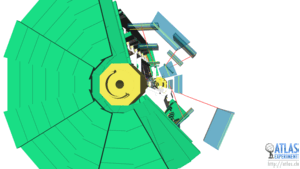
RESEARCH IN HIGH ENERGY PHYSICS WITH THE ATLAS EXPERIMENT AT CERN
 |
 |
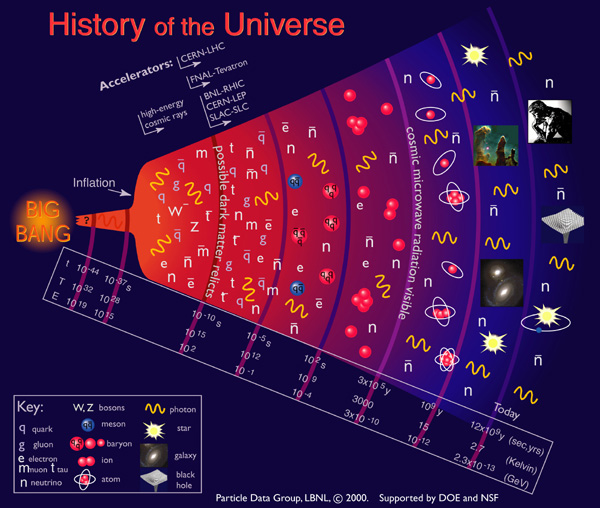
It has long been established that space is expanding from the very moment after the birth of the Universe, which we call Big Bang. Indeed, current research in astrophysics, high energy physics and cosmology provide important clues to the Big Bang. Research in Experimental High Energy Physics is full of new challenges and surprises, often resulting in new exciting discoveries. High energy physicists today is aiming to take physics to the next step, towards finding a deeper set of physical laws that govern our Universe. No one can say when this will happen, but there is a growing sense within the High Energy Physics community that it is within our reach. Nowadays, studies in high energy physics also strongly overlap with Astrophysics, Cosmology, and to some extent with Gravitational Physics and Astronomy.
Take an interactive tour of our universe and view the Milky Way at 10 million light years from the Earth. Then move through space, through the Milky Way Galaxy towards the Solar System and Earth in successive orders of magnitude, until you reach the subatomic particles -- the protons, the electrons, and finally the quarks, which are the fundamental constituent of matter. You can also take the Particle Adventure tour by clicking here. If you want to learn more about latest theoretical advancements in particle physics, then click here.
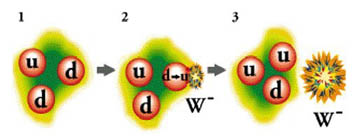
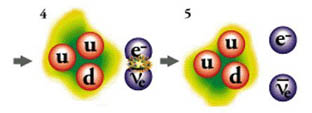
We have observed that all distant galaxies are moving apart from each other as a result of this expansion. Whether the expansion of the universe will speed up, slow down, or even possibly reverse, and collapse (close) into itself through gravity will depend on the amount and types of matter and energy contained in the universe. Ordinary hadronic matter that formed the protons, neutrons, nuclei and the atoms in the early universe can only account for the visible mass in galaxies and clusters, which is only a small fraction (less than 5%) of the total mass/energy of the universe. So, a new type of matter, not made of atoms must exist, which we call dark matter (since it is non-luminous).
Even stranger, recent discoveries indicate that most of the matter in the universe is dark energy, unlike any conventional matter we currently know today. The observations of supernovae from distant galaxies indicate that the empty space in the universe is filled with dark energy, which is pushing the universe to accelerate at an ever-increasing rate, thus overwhelming the pull of gravity, unlike anything we have seen before. While ordinary and dark matter pulls the universe together, dark energy seem to accelerate the universe. The nature of dark matter and dark energy are among the two new challenging questions facing high energy physics today.
Indeed, new elementary particles that will be discovered within the next two decades will help us to answer some of the fundamental questions in modern science about the structure of matter and the universe itself. I believe that within the next decade, research in high energy physics will provide new discoveries that will revolutionize our understanding of the universe and the fundamental structure of matter. Over the past several decades, new experimental discoveries and insights in High Energy Physics have significantly advanced our understanding of the universe. One of my goals is to discover new subatomic particles and phenomena, beyond what is known today. I am sure there are a lot of surprises awaiting us in the near future, as we attempt to learn more about the Universe through research in high energy physics. For many research questions, the answers are predictable, but when the question is a challenging one, the answer can be a surprise and somewhat unexpected, often resulting in an exciting discovery. Today, research in High Energy Physics takes us to the past, back in time, to fractions of a second after the explosive birth of the universe, the Big Bang.
The challenge of rapidly analyzing vast amounts of data from accelerator-based experiments has contributed to advances in cost-effective high–performance computing and internet communications. This need for rapid and effective communication among high energy physicists, led to the invention of the tool known as the World Wide Web (WWW) in the early 1990s. The Web was originally developed as a data communication tool for experimental high energy physicists around the world. Since then, the Web has indeed revolutionized the entire world, as far as information technology is concerned. Particle physicists have constantly been finding more and more effective ways of making measurements, faster ways of recording and analyzing data, and better ways of sharing and distributing information. To address the new challenges of large-scale multi-institutional collaborative data analysis tasks and due to the rapidly growing experimental datasets, global grid computing projects have recently been proposed.
Accelerators designed for research to collide subatomic particles have now become instruments for medical diagnosis and treatment. Particle accelerators are used to treat cancerous tumors that are inoperable or resistant to traditional radiation therapies. The technological base of cancer radiation therapy is the electron linear accelerator. Particle beams and detectors used in High Energy Physics research have also led to the development of new proton cancer therapies. At present, medical studies have shown that one in three of us will have an encounter with cancer, and in developed countries, about one in eight will have this treated by a linear accelerator.
Also the R&D of superconducting magnet designs used in accelerators has substantially improved the sensitivity, speed and resolution of MRI machines. In hospitals and medical centers, the very detectors built to produce fine images of subatomic particle tracks are now being used for visualizing the human body by using these particle imaging techniques. Thus medical imaging is a spin-off of experimental High Energy Physics research, which has led to the development of PET (Positron Emission Tomography). All these spin-off applications have greatly benefited society.
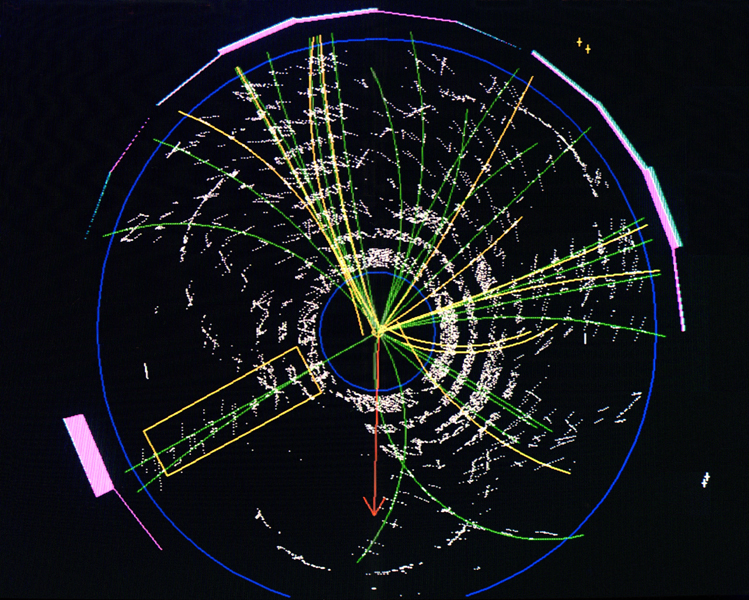
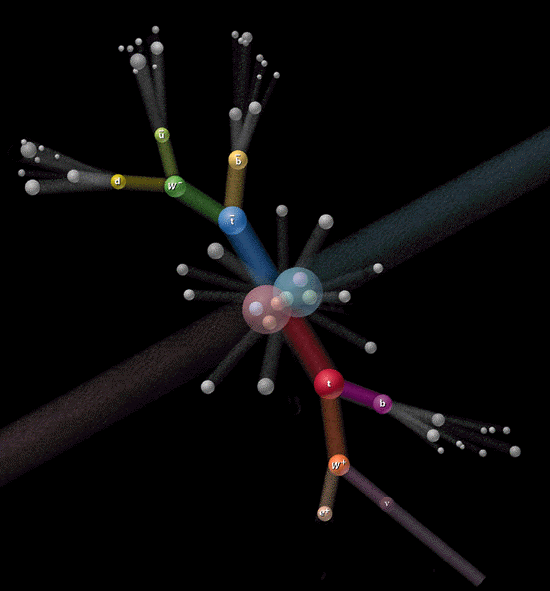
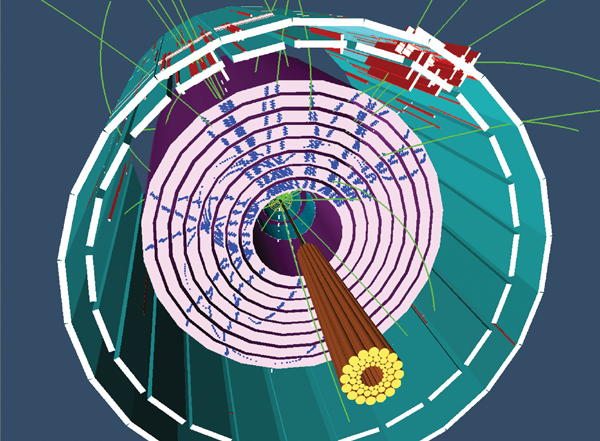
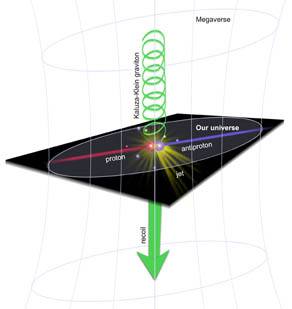
"High Energy Physics therefore plays an important part in advancing our scientific knowledge about inventing hi-tech applications as well as enriching technical education. X-rays and ultraviolet light from the particle accelerators known as synchrotron light sources provide valuable information about chemical composition, the dynamics of structural transition, and the magnetic properties of matter, which benefits the petrochemical, pharmaceutical, semiconductor and computer industries. Indeed, the R&D in high energy physics pushes the state of art in many directions, and has benefits well beyond the field of high energy physics. Indeed, High Energy Physics today is an exciting and vibrant field that is poised to make new discoveries in the next two decades and beyond.
Twenty years of precision tests of this Standard Model have resulted in an enormous number of successful comparisons of data and theory, with no verified departure from the Standard Model. However, current results in HEP hints that new physics, and answers to some of the most profound questions of our times lie at energies around 1 TeV. Despite the successes of the Standard Model, it is widely believed not to be the final word. And despite this impressive predictive power and the successes, we now believe that Standard model is a low-energy approximation to a more general theory, the one that explains our world in its completeness. Although, that the standard model of High Energy Physics has been studied with very high precision over the course of the past two decades without significant deviations, our understanding of the origin of the electroweak symmetry breaking is still incomplete. This arises in large part because the only remaining undetected standard model particle is the SM Higgs boson, which mediates electroweak symmetry breaking in the standard model.
Supersymmetry (SUSY) offers a possible cure for many of the shortcomings of the Standard Model. Space-time symmetries such as those of translation or rotations of coordinates lead to momentum and energy conservation. Supersymmetry postulates a further symmetry between bosons (integer-spin particles) and fermions (half-integer-spin particles), thereby generalizing the Poincare group describing space and time. This radical reshaping of our understanding of space-time is also a key ingredient in the theory of strings in multiple dimensions. When used as a phenomenological ingredient of physics at the scale of present-day experiments, it provides a natural solution to the shortcomings of the SM involving the instability of the mass of the Higgs boson, and permits the unification of the strong and electroweak forces. Supersymmetry predicts that each known fermion and boson should have a mirror "superpartner" of the opposite type. Clearly, supersymmetry is broken, since there is no spin-zero superpartner for the electron at 0.511 MeV. But to be self-consistent, supersymmetry predicts that the superpartners should be found with masses below 1000 GeV, which will be within the reach of discovery at the LHC.
According to SUSY, similar to the quarks and gluons which make up protons, squarks and gluinos should be readily produced, and if it does exist, it ought to be found at LHC. While most squarks are anticipated to be heavy, according to some SUSY models, there could be lighter bottom and top squarks. While it seems like a paradox, according to these SUSY models, the higher masses of bottom and top quarks could lead to smaller masses for their superpartners. The models predict that left and right helicity states of the third generation squarks can have large mixing, leading to one of their masses eigenstates to be substantially lighter that other squarks. These SUSY particles can be produced at LHC, as bottom and anti-bottom squark pairs. Indeed the next research instrument in HEP that will answer some of the outstanding questions in HEP will be the LHC. There is an almost agreed expectation that the new upcoming experiments in LHC will make the next generation of breakthrough discoveries.